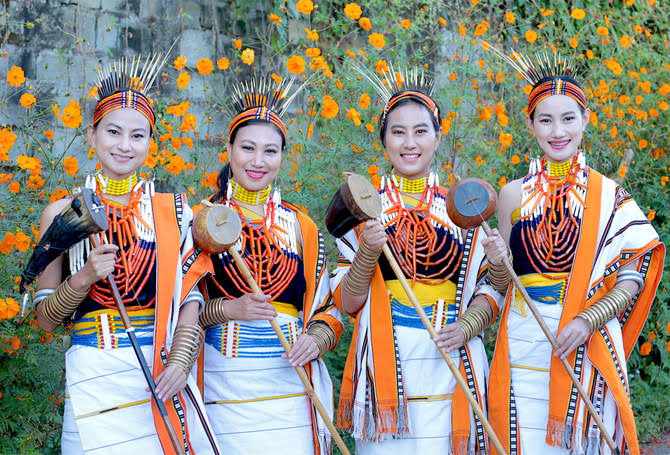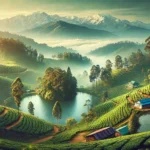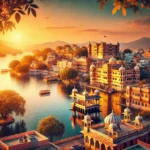Explore the unexplored! Northeast Nagaland offers unique tribal cultures, pristine landscapes, and offbeat gems. Discover the must-visit places and rich traditions in this fascinating region of India.

1. Introduction to Northeast Nagaland
Northeast Nagaland is one of the last frontiers of unexplored India, home to an incredible variety of tribes, each with its own unique language, customs, and traditions.
Unlike the more frequented tourist destinations, Nagaland’s northeastern region remains pristine, offering a surreal escape into raw nature, ancient tribal cultures, and age-old traditions.
From vibrant festivals to stunning unexplored landscapes, this part of India is waiting to be discovered by the intrepid traveler.
Fun Fact: Nagaland is often referred to as the “Land of Festivals” due to its year-round festivities that celebrate its rich tribal heritage.
To explore more hidden gems in India, check out our blog post on Top 10 Hidden Beaches of India.
For an official guide Visit Nagaland Official Tourism Website
2. Geography and Location
Nestled in India’s northeast, Nagaland is bordered by Assam to the west, Arunachal Pradesh to the north, Manipur to the south, and Myanmar to the east. The region is characterized by its rugged terrain, rolling hills, and dense forests.
This diverse geography not only gives the area its stunning beauty but also makes it a hotspot for eco-tourism and adventure activities like trekking and bird-watching.
Quick Geographic Facts:
- Capital: Kohima
- Highest Peak: Saramati (3,826 meters)
- Major Rivers: Doyang, Dhansiri, Tizu
3. Tribal Diversity and Cultures
Nagaland’s most fascinating aspect is undoubtedly its tribal diversity. Home to 16 officially recognized tribes, each has its distinct dialect, attire, customs, and festivals. Some of the most prominent tribes include the Ao, Angami, Sumi, and Konyak.
Key Tribal Practices:
- Konyak Tribe: Known as the last headhunters of Nagaland, they have a fierce history, but today they are skilled in arts like wood carving and tattooing.
- Ao Tribe: Famous for their role in introducing Christianity to Nagaland, they are also known for their colorful attire and hospitality.
- Angami Tribe: The Angamis, who reside around Kohima, are famous for their unique architectural style and agricultural practices, especially the cultivation of rice terraces.
Tip: While in Nagaland, a visit to a traditional Naga village will give you a deeper insight into their way of life, including their unique housing structures and crafts.
Interested in tribal cultures? Discover the Top Tribal Festivals in India.
Learn more about the diverse tribes of Nagaland at Nagaland State Museum.
4. Best Time to Visit Northeast Nagaland
The ideal time to visit northeast Nagaland is between October and May, as the weather remains pleasant. Winter (December to February) brings mild cold, perfect for exploring the mountains, while summer offers clear skies and vibrant landscapes.
Seasons to Consider:
- Summer (March to May): Best for trekking and exploring the lush green valleys.
- Winter (October to February): Great for attending festivals like the Hornbill Festival and enjoying the cool weather.
Pro Tip: Visiting during the Hornbill Festival (first week of December) is the best time to witness the tribes come together to showcase their traditional art, music, and dance.
For an updated schedule of the Hornbill Festival, visit the Nagaland Tourism Events Calendar.
5. Hidden Tourist Spots
While Nagaland is rich with well-known tourist destinations like Kohima and Dimapur, the northeastern part of the state hides several lesser-known treasures. Here are some hidden gems:
1. Tuensang:

One of the largest districts in Nagaland, Tuensang is famed for its untouched landscapes and traditional villages. Visit the ancient stones of Longtrok, which are believed to have mystical significance for the locals.
2. Shilloi Lake:

This picturesque, heart-shaped lake is located in the Phek district. The legend surrounding this lake makes it a spiritual spot for the local tribes, who believe it is protected by their deities.
3. Longwa Village:

A truly unique experience awaits in Longwa, where the village chief’s house straddles the India-Myanmar border. The Konyak tribe, once known as headhunters, inhabit this village, offering a glimpse into a lifestyle frozen in time.
Want to discover more offbeat locations? Read our article on Top 5 Lesser-Known Destinations in India.
Plan your visit to Nagaland with Travel Tips from Incredible India.
6. Traditional Festivals and Customs
Nagaland’s festivals are deeply rooted in its tribal traditions, and most revolve around agriculture. Each tribe celebrates its unique festivals, reflecting its customs, beliefs, and ways of life.
Major Festivals:
- Hornbill Festival: This is the largest and most popular festival in Nagaland, where all tribes come together to celebrate their rich cultural heritage. The festival showcases traditional dances, arts, and crafts.
- Aoling Festival: Celebrated by the Konyak tribe in April, this marks the beginning of the new year and the arrival of spring.
- Moatsu Festival: The Ao tribe celebrates this festival to mark the end of the sowing season, with feasts, dances, and traditional sports.
Pro Tip: Attending a traditional festival offers the perfect opportunity to experience authentic Naga music and dance performances, along with their distinct attire and headgear.
7. Cuisine of Northeast Nagaland
Naga cuisine is known for its simplicity and bold flavors, largely using ingredients sourced from the surrounding forests. Their love for smoked meat, fermented foods, and spices makes their dishes unique and flavorful.
Must-Try Dishes:
- Smoked Pork with Bamboo Shoots: One of the most popular dishes in Nagaland, it’s served with rice and a variety of chutneys.
- Axone (Fermented Soybeans): Known for its strong, pungent flavor, this dish is an acquired taste but a must-try for adventurous foodies.
- Galho: A light rice porridge often served with vegetables and meat.
Food Tip: Naga meals are often accompanied by a local chutney known as “Tathu”, made from the region’s fiery chilies.
Explore more about Naga cuisine on Nagaland Cuisine.
8. How to Reach Northeast Nagaland
Getting to northeast Nagaland requires a bit of planning, but the journey is as rewarding as the destination.
Travel Options:
- By Air: The nearest airport is Dimapur, which has regular flights from Guwahati and Kolkata.
- By Train: Dimapur Railway Station is the closest railhead, well-connected with major cities in Assam and the rest of India.
- By Road: You can drive or take a bus from Guwahati to reach Nagaland’s interior areas. The roads are scenic, albeit rugged in some places.
Travel Tip: Make sure to hire a local guide if you plan to explore remote areas. They can help navigate both the terrain and the cultural nuances of different tribal regions.
9. Sustainable Tourism Initiatives
In recent years, sustainable tourism has gained traction in Nagaland, with an increasing number of eco-friendly accommodations and community-based tourism initiatives.
These efforts aim to preserve the local environment while allowing travelers to immerse themselves in authentic tribal experiences.
Eco-Tourism Initiatives:
- Homestays: Staying with local families offers a more immersive cultural experience and supports the local economy.
- Eco-friendly Campsites: Located in pristine nature reserves, these campsites allow travelers to enjoy nature responsibly.
- Tribal Art and Craft Workshops: Learn traditional Naga crafts directly from the artisans, ensuring the preservation of these art forms.
Learn about Nagaland’s sustainable tourism efforts at Sustainable Nagaland.
10. Final Thoughts on Exploring Northeast Nagaland
Northeast Nagaland is a treasure trove of untapped beauty, cultural richness, and traditional wisdom. Whether you’re fascinated by tribal heritage or seeking adventure in unexplored landscapes, this region offers a perfect escape from the ordinary.
Respect the local customs, engage with the community, and explore the hidden gems that make Nagaland one of India’s most intriguing travel destinations.






